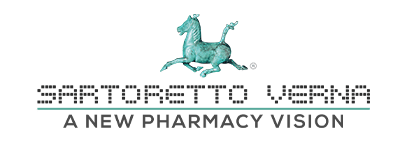01 Mar Pharmacy lighting design: creativity, technology and research
Pharmacy Lighting Design
Creativity, technology and research
In 1879 Thomas Edison invented the light bulb. Three years later, New York was lit up by 5000 light bulbs. Life linked to the rhythms of nature; the sun, day, night and the seasons was over and destined to be become a distant memory.…

Welcome to the world that never sleeps! Why should pharmacies not join in? Because the herbalist still uses candles to light up his laboratory? Jokes aside, there is a huge difference between the lighting used in supermarkets/large chain stores and pharmacies, which are often located on the same high street. The large shops use a kaleidoscope of images, lights, sounds and even fragrances to grab the customer’s attention. Pharmacies, on the other hand, do not seem to be interested in using the same techniques to “court” their clientele, which in actual fact is only showing them due respect after all. It is as if Seneca and Galen have become best friends – well-being with lots of duties but no pleasure!
Lighting is a very important factor as it enables pharmacies to visually “speak” to customers, emphasise certain products, lines and types of merchandise as well guide them around the pharmacy. Do not underestimate lighting’s ability to surprise, reassure and make an ordinary retail floor into a truly magical place.
In the same way that a pharmacist’s professionalism adds value to the product, lighting adds value to a pharmacy’s interior. For this reason, we think that a detailed lighting plan is an integral part of everypharmacy’s design.

There are 2 factors to keep in consideration: K and Lx.
K stands for Kelvin grades and indicates a light’s temperature. Lx stands for Lux and is the unit used to measure lighting.
The colours we see are nothing but the result of our brain interpreting and elaborating data coming in from the eyes. This interpretation is influenced by the varying lighting conditions and each brain interprets the same data in a slightly different way, making any standardised cataloguing of colours impossible. As a result, ways have to been devised to establish what colour a certain light is. Light that has a temperature of around 5,500 K is conventionally classed as white, such as daylight. An object’s colour depends on its temperature, thereby leading to an association between the heat of an object and its colour when it is at a certain temperature. The 0°K is equal to -273°C.
If we use a low colour temperature (2000/3000 K) for an interior, then we will have a warmly lit environment (photo 1), perfect for a jeweller’s or a fashion boutique. If we have a high colour temperature (6000/7000 K), then we will have a coldly lit environment (photo 2), better suited to a hospital or clinic. We are contrary to creating uniform lighting, such as daylight, as it tends to eliminate the contrast between the exterior and interior, failing to stimulate people’s curiosity and the sense that they are entering into a new space. Its better to have a mix of both cold and warm lighting. The cold lighting is linear (neon or florescent) and sculpts and delineates the different volumes. Warm lighting is provided usually provided by gas-discharge spot lights (halogen or diodes – dichroic or metal halides) and make the products on display stand out (photo 3). To light up the pharmacy’s counter, we recommend hanging 32W fluorescent gas-discharge lamps or 35W mixed LED and metal halides (photo 6)

The lux is equal to light per sq. m. Sunlight varies between 32000 and 100000 lux, moonlight is equal to 1 lux. Every light bulb has is own level of lighting that can be measured in lux or plotted out on a photoemetric line graph which shows the illumination in relation to the size of the space in degrees. Some parameters already exist as a point of reference. It is advisable to guarantee at least 500 lux for the retail floor, 250 lux for the waiting areas and corridors, 120 lux for the stock room, 1,600 lux for the shop windows on busy streets and 3,000 lux for main streets going up to 5,000 so that the window displays contrast with the daylight.
A range of unconventional light fittings are also coming onto the market. These are more decorative, are very efficient and emit a long-lasting cold light. These include LED (photo 4) which highlight text or guide consumers when used as floor lighting or incorporated into walls. Fibre Optics (photo 5) are ideal for mimicking starry skies at night or lighting up products that are sensitive to excessive heat. Laser (photo 6) can be used to create very elaborate designs, such as an outline of an object or a text.

Progress is un-stoppable: Oled (displays made up of a electroilluminescent organic film that will soon replace liquid crystals) are just around the corner and are thin, flexible, bright, efficient and can be incorporated into every type of object or fitting.

It is essential to understand and know how to get the most out of light in order to make a retail area as unique as possible for your clients as well as a pleasant place to work.
WORK in future.
